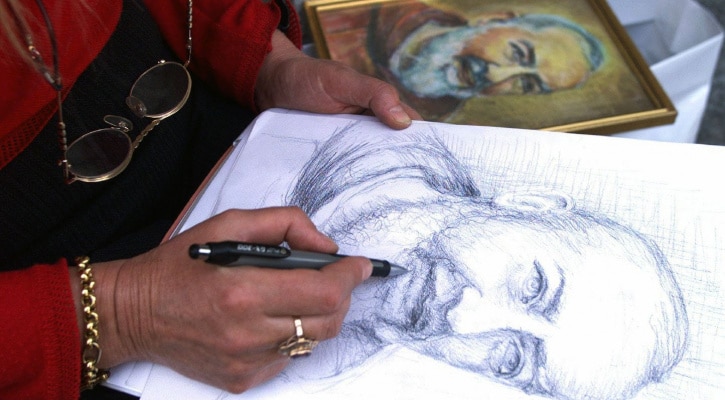I first met Padre Pio in 1967, the year before his death. He was old and very ill. As a journalist, I went to his home in San Giovanni Rotondo on assignment, and I had the opportunity to speak with him on two occasions. I was extremely impressed, not so much by the stories of miracles that people told about him but by the extraordinary moral strength that emanated from his whole being.
It was hard for me to watch him walking in the sacristy or the corridors of the monastery, bent over, dragging his swollen feet, and holding on to the walls so that he would not fall down. His suffering was tremendous, but he bore it without complaining as he continued to give himself to those who needed him. When he would lift his head and look around, his big eyes looked like they were burning, not from pain but from a goodness that he could not contain.
In 1969, the year after Padre Pio’s death, I wrote a long article for a newspaper on his life and his work. Rumors began to circulate that the economic empire that he had created in San Giovanni Rotondo was on the verge of collapsing. Many people prophesied that within a short time no one would remember the Capuchin friar with the stigmata.
A group of “Friends of Padre Pio,” represented by Giuseppe Pagnossin from Padua, one of Padre Pio’s spiritual sons, handed me a file that was chock-full of some very interesting, unpublished documents. There were thousands and thousands of them, arranged and bound together in volumes. Studying these documents, I discovered something about Padre Pio that few people knew: he had endured incredibly enormous suffering throughout his life, consisting of more persecution, humiliation, accusations, slanders, trials, and condemnations than one can imagine.
From that time on, I have continued to take a deep interest in Padre Pio, gathering together other documents that I have now arranged in this volume. This book does not claim to be a critical biography. Rather, I have sketched a chronicle of Padre Pio’s life, based mainly on the direct testimony of people who knew him thoroughly.
In general, when people write about Padre Pio, they tend to dwell on the penitential aspect of his life, thereby giving a somewhat dark and medieval tinge to his personality. But this is not really the case. Padre Pio was and is a man of hope. Throughout his life, in the midst of the most difficult trials, he always looked to the future with a spirit of optimism, faith, and love. He was a man who believed in progress. From the outset his clinic for the sick was on the vanguard of medicine. In his private life he was never a slave to rules or regulations that made no sense. He undertook colossal endeavors with a faith that bore miracles.
Pope Francis visited Padre Pio’s shrine in San Giovanni Rotondo, Italy, on March 17, 2018. Source: Catholic News Service
Padre Pio loved people. He wept and suffered with those who were afflicted, yet he laughed with those who were happy. Although he was a tender and affectionate man, he was often brusque with people, even with sick little children. One of his fellow friars, Fr. Pellegrino, once complained to him about this. In reply Padre Pio said: “I act like that so that I don’t let myself be overcome with emotion. Seeing people suffer is enough to bring me to tears, and then I would no longer be able to continue my ministry.”
From a spiritual perspective, there is no dispute regarding Padre Pio’s stature. Cardinal Siri once made the following remarks in an interview with me: “With the stigmata which he bore throughout his life and with the other physical and moral sufferings he endured, Padre Pio calls our attention to the body of Christ as a means of salvation.
Jesus died on the cross for us, and the entire theology of redemption rests on this truth, one of the principal tenets of our faith. This truth is so important that, throughout history whenever men have forgotten it or have sought to find it, God has always intervened with events, deeds, and miracles. In our time the temptation to forget about the reality of the body of Christ is enormous. And God has sent us this man with the task of calling us back to the truth.”
The life of this man was characterized by some of the phenomena typically associated with the paranormal world: bilocation, levitation, mind reading, premonitions, and clairvoyance. When his friend Angelo Battisti once questioned him about these things, Padre Pio told him: “Angelo, they are a mystery for me too.”
Since his death, Padre Pio’s renown has continued to grow. Some 200 monuments are dedicated to him. There are thousands of prayer groups around the world that draw their inspiration from him. He has faithful admirers and followers, even among Protestants, Buddhists, and Hindus. He is a man who will always be loved by people.


